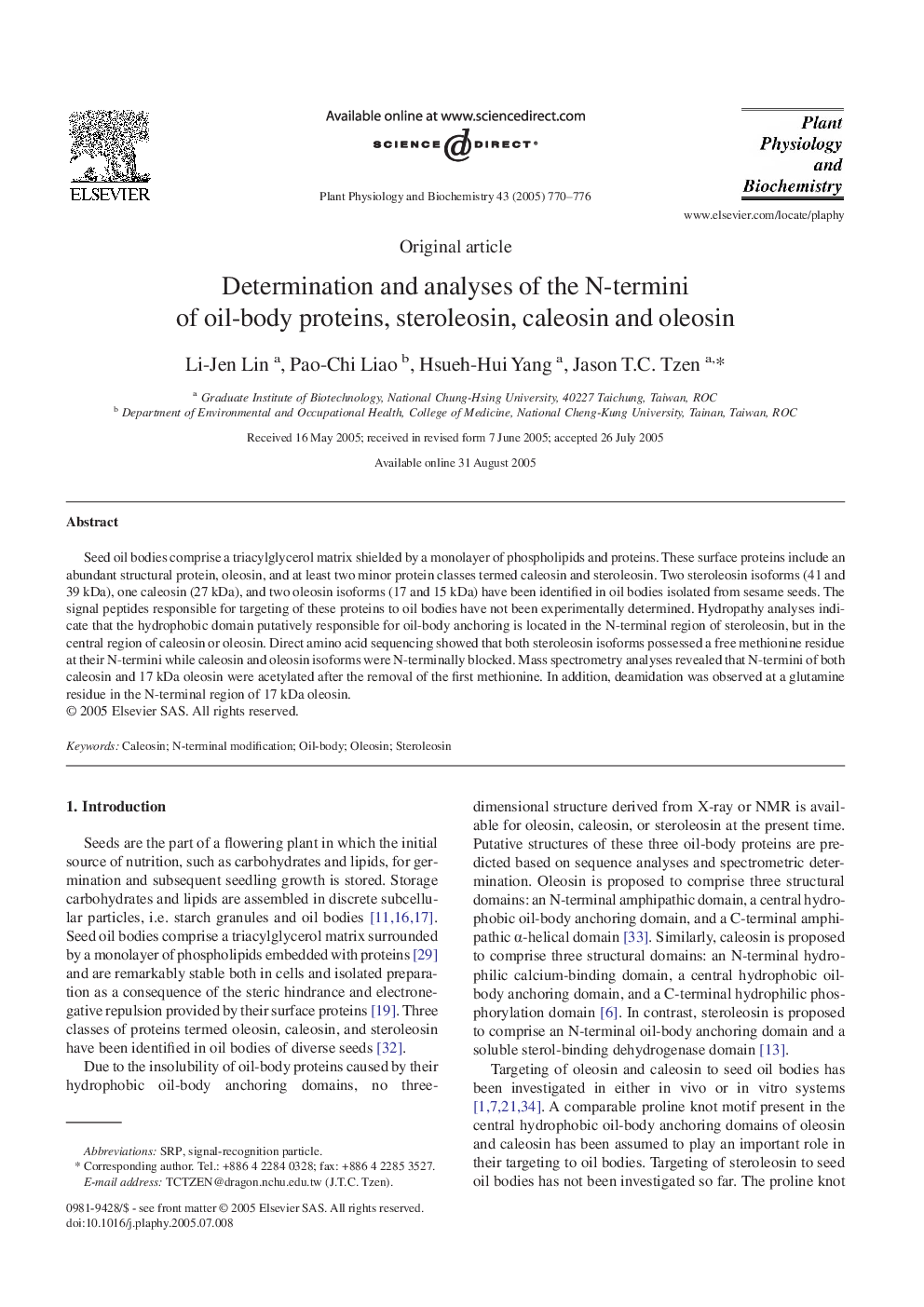| Article ID | Journal | Published Year | Pages | File Type |
|---|---|---|---|---|
| 10840584 | Plant Physiology and Biochemistry | 2005 | 7 Pages |
Abstract
Seed oil bodies comprise a triacylglycerol matrix shielded by a monolayer of phospholipids and proteins. These surface proteins include an abundant structural protein, oleosin, and at least two minor protein classes termed caleosin and steroleosin. Two steroleosin isoforms (41 and 39Â kDa), one caleosin (27Â kDa), and two oleosin isoforms (17 and 15Â kDa) have been identified in oil bodies isolated from sesame seeds. The signal peptides responsible for targeting of these proteins to oil bodies have not been experimentally determined. Hydropathy analyses indicate that the hydrophobic domain putatively responsible for oil-body anchoring is located in the N-terminal region of steroleosin, but in the central region of caleosin or oleosin. Direct amino acid sequencing showed that both steroleosin isoforms possessed a free methionine residue at their N-termini while caleosin and oleosin isoforms were N-terminally blocked. Mass spectrometry analyses revealed that N-termini of both caleosin and 17Â kDa oleosin were acetylated after the removal of the first methionine. In addition, deamidation was observed at a glutamine residue in the N-terminal region of 17Â kDa oleosin.
Related Topics
Life Sciences
Agricultural and Biological Sciences
Plant Science
Authors
Li-Jen Lin, Pao-Chi Liao, Hsueh-Hui Yang, Jason T.C. Tzen,
